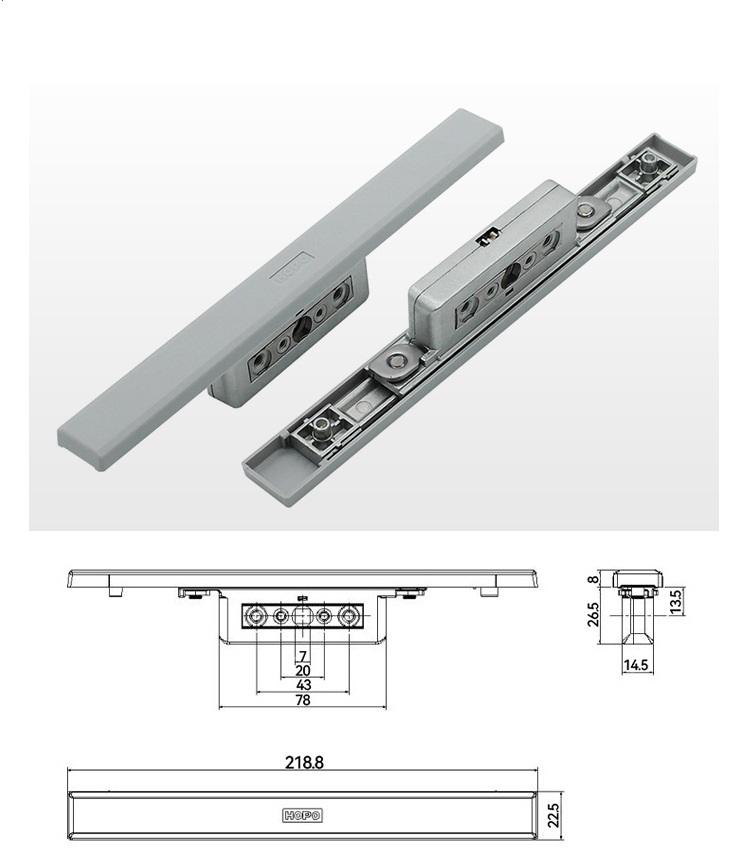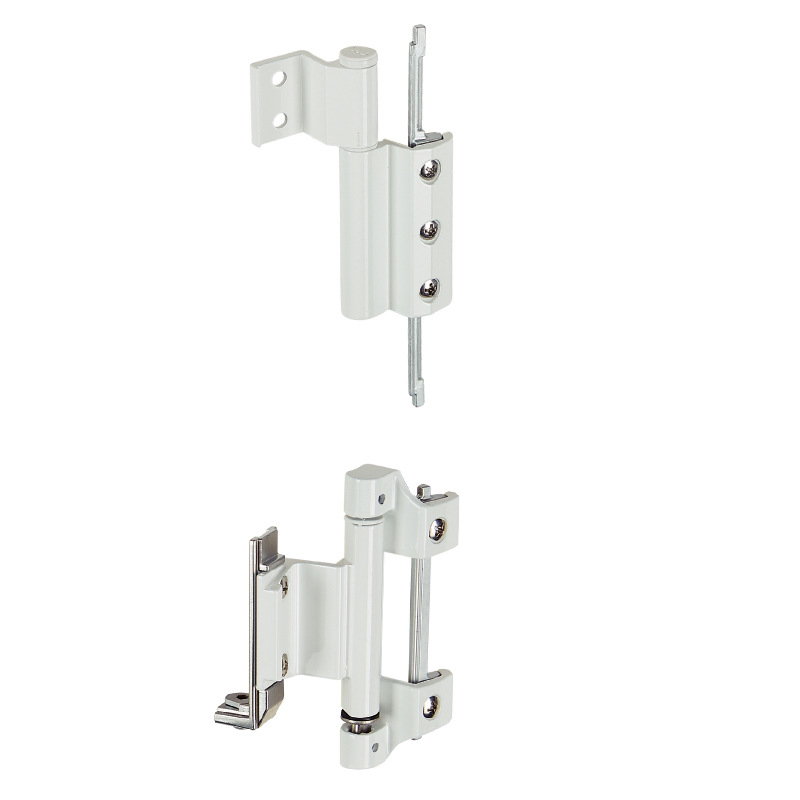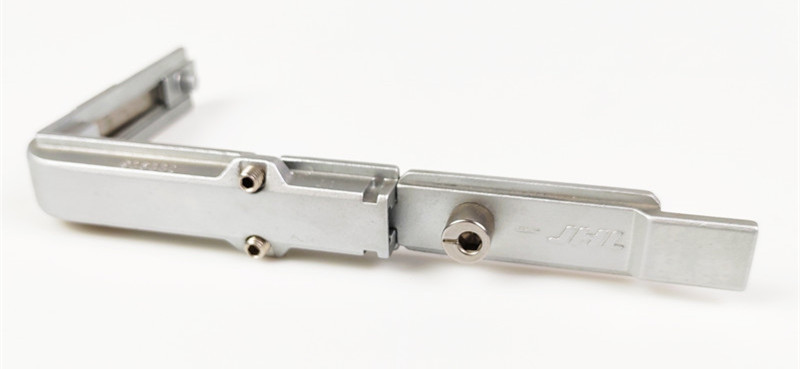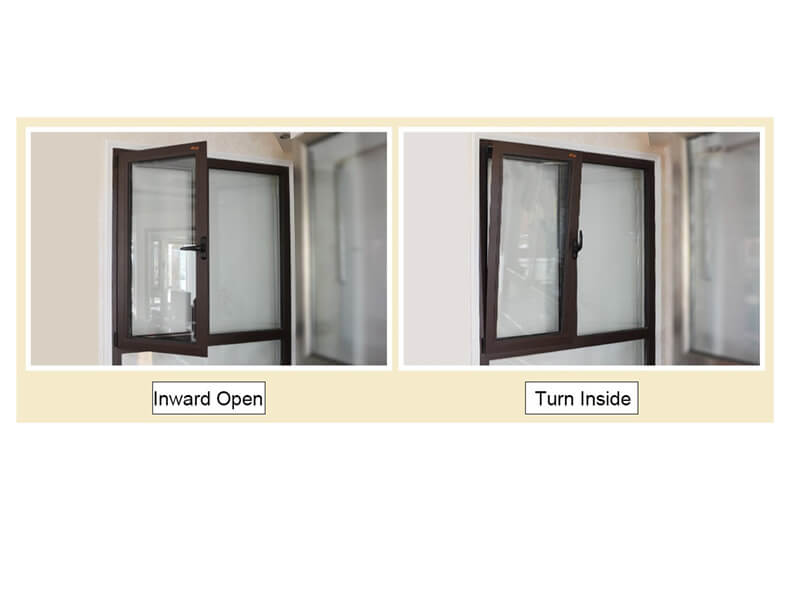Key Takeways:
-
Handles enable tilting for ventilation or swinging open for full access and easy cleaning.
-
Gearbox coordinates locking and opening functions, ensuring secure and smooth window operation.
-
Strikes, keepers, hinges, and pivots provide strength, stability, and controlled tilt-turn movement.
-
Corner drives enhance air sealing, reinforce structure, and improve overall efficiency of the window system.
Due to their increased demand and durability, builders and contractors often prefer using tilt-turn windows for their projects. Understanding the tilt and turn window mechanism and hardware is essential.
In 2022, the worldwide market for windows and doors was valued a t $208.1 billion. Forecasts indicate a significant growth trajectory, with an expected value of $356.7 billion by 2032, reflecting a steady compound annual growth rate (CAGR) of 5.5%.
A tilt and turn window offers the flexibility of two operating modes. It can tilt inwards at the top, like a hopper window, providing draft-free ventilation and protection against rain.
Alternatively, it can open inwards from hinges at the side, functioning like traditional casement windows. This dual functionality allows for efficient airflow control and easy cleaning while maintaining a stylish and functional appearance.
Ideally, tilt-and-turn windows enhance the aesthetics and offer great functionality in the new construction sites. Families prefer using these windows as they offer child-safe ventilation.
For more insights on modern window solutions and professional installation, you can explore resources at Oridow.
In the coming sections, we will elaborate on the mechanism of tilt-turn windows, understand their benefits, and discuss their important hardware.

Tilt and Turn Window Mechanism
The tilt and turn window mechanism allows for three distinct positions. Each position serves a specific purpose to cater to the occupants’ needs. These mechanisms are most effective when paired with durable frames, such as aluminum windows, which provide strength and long-lasting performance.
First Position – Closed and Locked
In this configuration, the window is shut firmly, and the handle is pointed downward, oriented towards the floor. This setup maximizes the natural light streaming into the interior, creating a bright and inviting living space while ensuring a secure closure.
Second Position – Swing Open
The handle is turned 90 degrees to open the window, pointing to the right. This action allows the window to swing inward in the tilt and turn window mechanism.
With the open window, occupants can easily access the outside, fostering a seamless connection between indoor and outdoor spaces and facilitating optimal airflow throughout the home.
Third Position – Tilt Inward
In this position, the window is closed, and the handle is rotated upward an additional 90 degrees, pointing towards the ceiling. This tilting option allows the window to pivot from the bottom and tilt slightly inward.
Once opened to a few inches, the window locks into place, preventing further opening. This ingenious tilt mechanism enables gentle breezes to enter the home. It effectively safeguards against rain and other external elements, maintaining a comfortable and pleasant interior environment.
The exceptional functionality and adaptability of tilt-turn windows make them an excellent choice for modern homes. They offer seamless transitions between ventilation and security options while optimizing the overall living experience for homeowners.
Tilt-Turn Window Hardware
Handles
The tilt and turn window has a user-friendly handle that enables effortless operation. It allows you to tilt the window inwards for gentle ventilation or swing it open like a casement window.
The handle’s design ensures easy cleaning, and its user-friendly mechanism can be operated by virtually anyone, regardless of age or physical ability.

Gearbox
You’ll find the essential gearbox responsible for the window’s locking and opening functions at the side of the tilt and turn window. This integral component coordinates the smooth operation of the window, ensuring a secure and reliable locking system.
The gearbox’s dual sides are firmly connected using a sturdy screw, enhancing the window’s overall durability and performance.

Strikes & Keepers
For enhanced security, strikes and keepers play a vital role in preventing unauthorized access from the outside. The keepers, acting as a simple but effective locking system, prevent the window from being pushed or pulled open.
These robust metal pieces tilt into place, securely anchoring the tilt and turn window mechanism and deterring unwanted movement.
Hinges & Pivots
The seamless tilting and turning action of the window are made possible by the harmonious interaction of hinges and pivots. Hinges are situated on the window’s side and function similarly to those on an average door, allowing the window to swing open effortlessly.
Meanwhile, pivots at the window’s bottom enable controlled top openings, facilitating gentle airflow when only slight ventilation is desired.

Corner Drives
To further enhance the window’s performance, corner drives are integrated into the top corner of the window frame, opposite the hinge side.
These corner drives serve multiple functions, contributing to improved air filtration and reinforcing the window’s structural integrity.
By promoting better airflow and overall efficiency, corner drives elevate the functionality of the tilt and turn windows, ensuring a comfortable and pleasant environment within the living space.
This essential tilt and turn windows components offer a versatile and practical solution for modern construction projects. It combines functionality, security, and aesthetic appeal in a single, intelligently designed system.

Benefits of Tilt and Turn Windows
Easy Cleaning
Tilt and turn windows offer the convenience of easy cleaning. With their inward opening mechanism, cleaning becomes hassle-free, eliminating the need for ladders or professional window cleaners. No leaning out is required, ensuring a safe and straightforward cleaning process.
Double Glazing and Triple Glazing
These windows come with standard double glazing, providing excellent insulation. However, opting for a triple-glazed tilt and turn window mechanism for areas with extreme weather conditions or high noise levels can further enhance heat retention and sound insulation.
These A-rated windows maximize energy efficiency and reflect excess summer heat, ensuring a comfortable living environment year-round.
Tilt and Turn Window Mechanism is Child-Safe
Tilt and turn windows are an ideal choice for families with young children. The high-quality handles offer flexible ventilation options while prioritizing safety.
These windows provide increased security and can be easily adjusted to serve as emergency exits when needed, ensuring maximum safety and ventilation without compromising on natural light.
Secure from the Outside
Modern tilt and turn windows are designed to withstand forced entry attempts, ensuring the security of your home. The internally fitted glazing, whether double or triple-glazed, adds an extra layer of protection, making removing the glazing from the exterior nearly impossible.
Ideal for Smaller Spaces
Tilt and turn windows are perfect for compact areas as they open inwards, making them suitable for balconies, especially Juliet balconies, where traditional French doors might consume too much space.
Novel Opening Mechanisms
Tilt and turn windows offer a unique and versatile window operation. Whether you need a gentle breeze or complete ventilation, these windows provide a range of options.
With their classy appearance and energy-efficient properties, tilt and turn windows combine practicality and style seamlessly.
Final Thoughts
In conclusion, the hardware and tilt and turn window mechanism are crucial in ensuring smooth and effortless operation. These windows offer versatility, convenience, and durability by incorporating high-quality components.
From easy cleaning and child-safe features to enhanced security and novel opening mechanisms, the hardware of tilt-turn windows guarantees a seamless and enjoyable experience for homeowners.
Investing in top-notch hardware ensures these windows function flawlessly, providing long-lasting value and satisfaction for any modern living space.For a closer look at premium options available, explore the full range of window and door products designed for modern construction needs.
FAQs
-
What is a tilt and turn window mechanism?
A tilt and turn window mechanism lets a window open in two ways:-
Tilt inward at the top for safe, draft-free ventilation
-
Swing inward from the side like a casement window
-
-
How do tilt and turn windows work?
They operate in three positions:-
Closed & locked – handle down, secure closure
-
Swing open – handle turned sideways, opens inward
-
Tilt inward – handle up, window tilts slightly for ventilation
-
-
What are the benefits of tilt and turn windows?
Key advantages include:-
Easy cleaning from inside the home
-
Child-safe ventilation with tilt mode
-
Enhanced security with multipoint locking
-
Excellent insulation with double or triple glazing
-
Space-saving inward-opening design
-
-
What hardware is used in tilt and turn windows?
Main components include:-
Handles for easy operation
-
Gearboxes for locking and opening
-
Strikes & keepers for security
-
Hinges & pivots for tilting and swinging
-
Corner drives for airflow and frame strength
-
-
Are tilt and turn windows secure?
Yes, they are highly secure due to:-
Internally fitted glazing (cannot be removed outside)
-
Multipoint locking systems
-
Strong strikes and keepers preventing forced entry
-
-
Can tilt and turn windows be cleaned easily?
Yes. The inward swing mode allows homeowners to safely clean both sides of the glass from indoors without ladders or leaning outside. -
What is the difference between double glazing and triple glazing in tilt and turn windows?
-
Double glazing – provides strong insulation and energy efficiency
-
Triple glazing – offers maximum noise reduction and heat retention, ideal for extreme weather or noisy areas
-
-
Are tilt and turn windows child-safe?
Yes. The tilt function opens only a few inches, preventing children from fully opening the window while still allowing airflow. -
Why are tilt and turn windows good for small spaces?
Because they open inward, they don’t obstruct outdoor areas like balconies, patios, or walkways. -
What makes tilt and turn windows different from casement or hopper windows?
Tilt and turn windows combine both mechanisms:-
Like a casement window, they swing inward from side hinges
-
Like a hopper window, they tilt inward at the top
-
Unlike either, they offer both functions in one design
-





